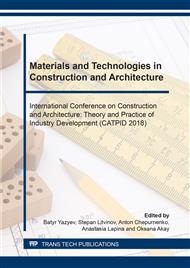p.974
p.979
p.985
p.991
p.996
p.1001
p.1007
p.1013
p.1019
Accounting of External Factors for Sewage Disinvasion
Abstract:
The results of a survey of the background parasitic characteristics on individual structures of the municipal sewage treatment plant are given. It is established that 27% of the grids and sand trap are retained, the effectiveness of the retention in the biological treatment facilities after the secondary settling tank corresponded to 61.9%. Helminth eggs are mostly concentrated in sewage sludge, to a large extent maintaining their viability (90%). An imitating model of the process of disinvasion of sewage and sediments was developed, represented by a network diagram for sewage treatment fa-cilities. In production conditions, an experiment was performed to determine the influence of exter-nal factors on the efficiency of dehelmintization by the plant reagent.
Info:
Periodical:
Pages:
996-1000
Citation:
Online since:
September 2018
Authors:
Price:
Сopyright:
© 2018 Trans Tech Publications Ltd. All Rights Reserved
Share:
Citation:


